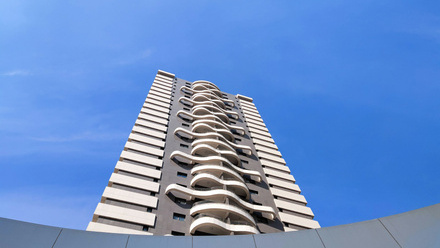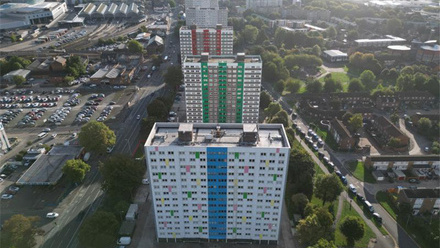Building Safety Bill aims welcome but more detail needed
The Government must improve on the detail if it is to demonstrate that its new building safety proposals will drive much needed reform in the sector. The findings come in a report published this week by the Housing, Communities and Local Government Committee following pre-legislative scrutiny of the draft Building Safety Bill.
The proposed legislation sets out the framework the Government intends to adopt to implement a new building safety regime and to remedy the flaws in the existing system identified in the Hackitt Review.
The report further finds that, in its current form, the draft legislation fails to provide sufficient protection against leaseholders paying the bill for work to remedy existing fire safety defects. The building safety charge should be a way of funding the cost of future work, not a mechanism for ensuring residents foot the bill for historic failures in fire safety construction or maintenance. The Committee reiterates its long-standing call on the Government to provide sufficient funding to fund remedial work and develop mechanisms to recover these costs from those responsible.
Following pre-legislative scrutiny of the draft Building Safety Bill, the Committee found an over-emphasis on as yet unpublished secondary legislation and regulation left significant gaps in how the new regime would operate in practice. It called on the Government to provide much more detail when it publishes the final Building Safety Bill and remove any doubt on the scope of the legislation and the responsibilities on building operators.
The report recommends greater oversight of key professions in the construction and building management sectors, including new roles created by the Bill. The exact responsibilities and competencies of the newly established accountable person and building safety manager positions are not well-defined and should be clarified. The Bill should also require building safety managers, as well as other professions involved in the design and construction of high risk buildings, be subject to national accreditation and registration standards.
Responding to the Report, the Chartered Institute of Architectural Technologists (CIAT) said: "CIAT welcomes the Parliamentary Report on pre-legislative scrutiny of the draft Building Safety Bill. It is pleased to note that many of our comments and recommendations have been recognised, which includes the support for the extension of the scope of "higher-risk building".
"Our concerns both in relation to the possible confusion and misunderstanding on titles and competences required for the roles of principal designer and contractor envisaged for the new dutyholder regime, plus the uncertainty as to how this sits alongside and works with the CDM regulations has been recorded. We consider these issues are fundamentally in need of consideration and clarity to ensure the effective understanding for all stakeholders and particularly clients.
"Now we have this Report, we await the necessary detail, in order to plan and make ready for this new regime. This is essential to protect life and rebuild the much needed confidence in the construction sector."
Publishing the report, Chair of the Housing, Communities and Local Government Committee, Clive Betts MP, commented: "Establishing a new regime to ensure that buildings are made safe will require significant change to how buildings are constructed and maintained. It is crucial that from day one those tasking with their design, construction and upkeep have no doubt of the new standards they are to adhere to and responsibilities expected of them.
"As it stands, there are still questions over how broad the framework set out in the draft Bill will operate in practice. Key definitions remain unclear and responsibilities ill-defined. Before they bring the legislation back to the House of Commons these areas must be addressed in full.
"The Government must also bring an end to the ongoing uncertainty around who will pay the cost for the historic failures in the building safety regime. Leaseholders should not be expected to foot the bill for failures that were not of their making. This has dragged on far too long now and the Government must accept that it will have to step in to cover the cost in the short term. But we are equally clear in stating that this should be the first step ahead of establishing robust mechanisms to ensure that those who are responsible for fire safety failures finance their remediation."
You can access the full report here or at the link here.
Summary of main recommendations:
Protecting leaseholders from footing the bill
The question of who should pay for remedial work to fix existing fire safety problems remains unsolved and it is clear that the £1.6 billion building safety fund will prove insufficient. The draft bill fails to protect leaseholders from being charged for correcting issues for which they were not responsible, and would allow freeholders to recover the cost of work through the building safety charge, contrary to what Ministers had promised.
The Government must once and for all commit to the principle that leaseholders are not liable for fixing historic building safety defects and this must be reflected in the Bill. Historic costs must be explicitly excluded from the building safety charge.
The Government should also announce its proposals for funding all building safety remediation work, removing the threat of large bills from leaseholders. In the short term this will require the Government to foot the bill while mechanisms are developed to recover the cost from those responsible for fire safety defects.
More detail needed in key areas
The Building Safety Bill is the primary legislation that sets out the framework by which a new regulatory system will be established. However without the supporting secondary legislation and regulation alongside it, it is difficult to assess how effective the proposals will be in practice. This is especially important in understanding the likely impact of proposals such as the Gateways process and the regulation of construction products. The draft legislation also fails to provide an explicit definition of the 'higher risk' buildings it will apply to, leaving clarification of the term to the explanatory notes.
The Government should include as much detail as feasible in the Bill itself or publish the secondary legislation alongside it, particularly in the areas where this additional information will prove critical. It should also clearly set out exactly which buildings the legislation applies to so that dutyholders are clear of their responsibilities.
Establishing new responsibilities and setting professional standards
Under the legislation, each building will require a building safety manager to oversee the day-to-day management of building safety risks. It is as yet unclear whether the Government will adopt the competency framework for the role that was proposed in the Working Group 8 report or choose an alternative framework. This should be announced before the Bill is published.
Given the critical role that this new position will play in the practical operation of the new building safety regime, it would be appropriate to create a system of accreditation and registration to give residents the confidence in the skills and competence of those appointed to the role. The Government should establish a national system of accreditation to agreed common standards and a central register of building safety managers.
A national system for third party accreditation and registration should also be established for all professionals working on the design and construction of higher-risk buildings.
The draft Bill includes the role of the 'accountable person' who will be responsible for ensuring the ongoing safety of a building once it is inhabited. There is a risk that there will be overlap and confusion with the responsibilities of the existing role of responsible person, responsible for fire safety. The Government should publish statutory guidance alongside the Bill to make clear how it expects the two roles to co-operate in practice. In the longer term it should give consideration to how the two roles can be consolidated.
Improving materials testing
The Hackitt report found that the product testing regime was opaque and needed greater transparency. While the draft Bill contains provisions for regulating construction products there is a lack of detail on the future testing system.
The Committee calls on the Government to legislate for a rigorous and transparent system for regulating construction products. This should include the publication of test failures and re-run tests so there can be greater confidence that the materials used on new buildings are safe.





